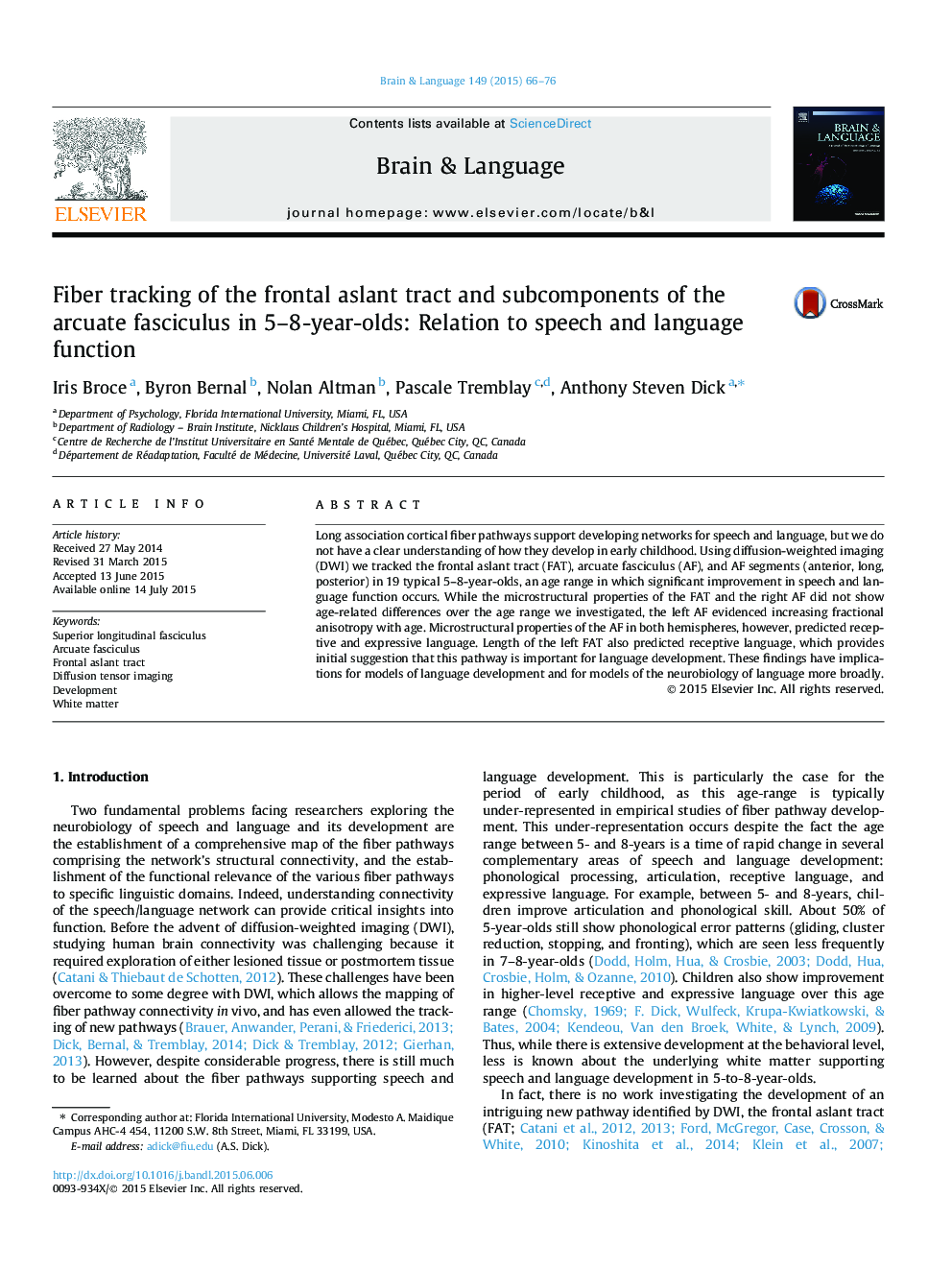| Article ID | Journal | Published Year | Pages | File Type |
|---|---|---|---|---|
| 7284129 | Brain and Language | 2015 | 11 Pages |
Abstract
Long association cortical fiber pathways support developing networks for speech and language, but we do not have a clear understanding of how they develop in early childhood. Using diffusion-weighted imaging (DWI) we tracked the frontal aslant tract (FAT), arcuate fasciculus (AF), and AF segments (anterior, long, posterior) in 19 typical 5-8-year-olds, an age range in which significant improvement in speech and language function occurs. While the microstructural properties of the FAT and the right AF did not show age-related differences over the age range we investigated, the left AF evidenced increasing fractional anisotropy with age. Microstructural properties of the AF in both hemispheres, however, predicted receptive and expressive language. Length of the left FAT also predicted receptive language, which provides initial suggestion that this pathway is important for language development. These findings have implications for models of language development and for models of the neurobiology of language more broadly.
Keywords
Related Topics
Life Sciences
Neuroscience
Biological Psychiatry
Authors
Iris Broce, Byron Bernal, Nolan Altman, Pascale Tremblay, Anthony Steven Dick,
